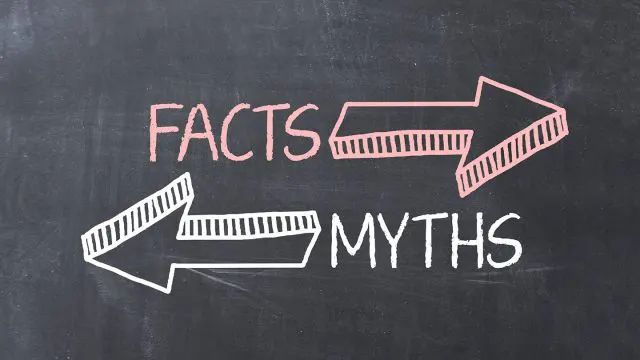Marketers are not lead generators. They’re revenue generators.
This is according to Alon Waks, fractional CMO and go-to-market advisor, in this week’s Growth Marketing Chat. Waks shares invaluable insight on how marketers should relate to revenue, and how they can articulate the most important KPIs.
By aligning your CRM and sales outreach tools, centralizing marketing operations, and facing the fact that in marketing, revenue is THE number, marketers can make a powerful impact on company growth and revenue.
“Show your worth. And you have to articulate it in numbers because you don't own revenue. I love it when marketers say ‘marketing owns revenue.’ No, it does not. It is a compelling, critical piece of getting to revenue, but we don't own revenue.”
How Can Revenue Marketers Prove Their Worth?
Join Waks as he details his own background and gives practical advice on how marketers can deal with bad products, articulate metrics, and gain a seat at the table. He reveals:
- The top 3 metrics every marketer needs to know
- Why sales get a bigger seat than marketing (and what marketers can do about it)
- How to de-silo marketing and sales departments and tools
- The key to setting expectations for clients
- The importance of investing in operations and centralization
- And much more...
Marketing may not own revenue, but it’s the metric all marketers need to understand is the number one priority.
Press play on the full interview to learn how to attribute revenue to marketing, and why it matters so much.
About Our Guest
Alon Waks is a 4-time CMO/marketing leader and seasoned enterprise software executive, having helped B2B and SaaS companies scale and expand their GTM over 20 years. Alon focuses on inbound, outbound and ABM, with compelling B2B2C content and results-based marketing programs.
Alon is a fractional CMO / Advisor today at growth phase companies in the martech and CX spaces. Alon led marketing prior at Kustomer, Bizzabo, LivePerson and 8x8, managing and scaling teams from 0 to >40, including BDR and revops functions.
Alon is a podcast host, community leader for executive marketers and a known speaker on B2B and B2B2C topics, with a focus on sales and marketing alignment, 1-1 and 1-few marketing, enterprise GTM, and a passion for Account-Based Everything (ABM).

Video Transcript:
NICK: Alright, welcome everybody today we have a very exciting guest, Alon Waks Fractional CMO, and go to market advisor. Alon, welcome to Growth Marketing Chat.
ALON: Thanks man. Happy to be here.
NICK: Thank you for being with us. So, Alon maybe we can start by having you tell us a little bit about your journey in marketing and kind of what led you to your current role as, as kind of a marketing leader at a few different companies.
ALON: Yeah, for sure. So I'm, you know, CMOs come from three different kind of backgrounds they come from, the branding side, the demand side, or the go to market product marketing. I'm from the latter, from the product marketing. I started hardcore product marketing at a big company Avaya and I learned a lot, but the funny thing is I didn't plan to go into marketing ever. I always wanted to have ownership on, I was a consultant for many years and I wanted to be on ownership of a solution, a product, and be kind of like a manager. So I actually went to product. I, I was a product manager for quite a few years and enjoyed that a lot. And my dabbling into marketing started out with understanding that I don't understand the market enough and I want bridge. I wanna bridge the gap between the market and the company.
And to do that product marketing is actually, I feel always, will be the best translator and the best bridge between those two. So that led me to it. And I, and I'm still a big believer that the best place to understand go market strategy all the way from ICP down to persona is a very important place to start and very the most strategic place for marketer. And then later on my career, of course, I've developed. And as I grew with the ranks and companies, I got deep into demand into branding. And now I assume I know a few more things
NICK: No, that's great. And I'm always fascinated by, by the different backgrounds that the lead down this path, because I feel like 75, 70 5% of the marketing leaders I talked to didn't start in marketing or, or didn't major in marketing. And you know, so it's interesting the different paths that lead to it. Can you dive into a little bit more detail? What did you learn on the product side that helps you be a better marketer today?
ALON: The things you learn on the product side is really understanding payback. So you like a CEO of a mini business, you have a product line management duty, and if you don't know that you're gonna reach 20 million in sales and how you're gonna get there from a cogs perspective, SGNA, what is a margin, then it's gonna be very, very hard to do that. It's like, it's extremely hard to understand marketing payback going into marketing is like a brand saying with controversial results, not very viable in many you know, for profit companies, you have to be able to articulate and show a predictable stream of dollar in dollar art, right? Payback as well as sure there's a lot of non-paid stuff which will supplement, but you also want to measure success of these, whether director indirect. So there was the, probably the number one thing that you learn, the second is having a cohesive understanding of cross-functional marketing is super cross-functional. You can't just do things in a silo like campaigns or Legion. That's no, in order for you to be successful, you must have the customers involved. You must have sales, very involved cause otherwise the trust and building alignment will never fly and you're going to be in a vacuum. And of course you have to be very closely aligned to the CFO cause that's very important to show results.
NICK: Absolutely. Yeah. I mean, I think I, I talked to, to leaders in marketing and I hear these, these same kind of themes that these patterns are emerging, that the cross-functional approach towards marketing and really involving all departments, including customer success as well is really important. How do you approach that as a, you know, in your current role as a, as a fraction of CMO, you're a little bit of an outsider. How do you build that internal consensus when you come into into a client?
ALON: I start always with definition of success. Always question sounds about question too much. Whether just my nature, what are we trying to achieve? And if we're not all swimming in the same direction, then I see it as my job coming in, especially as an advisor and somebody who's building a strategy and plan to course correct. And I'll dive deeper for a second. So the first thing that I say to person who brings me on board, usually it's a board member or CEO is, gotta start putting in the middle of the week, what is called an alignment call sales, marketing ops. And I would like the CFO, COO even CEO in those calls. That's the only thing I want from you. Why? Because that's the number one metric driven feedback focus meeting, where we're ensuring that everybody swims the right direction, marketing can come and say, Hey, we rock, we created 500 and kilos in the last month. And sales can come and say the leads suck.
Do good for us and yeah, welcome to a marketing life. And if you don't have alignment on rules of engagement, definition, qualification, and all that. And in, in one meeting, you go over things even from a agreed upon dashboard and agreed upon language, which takes time. That takes time to develop also then the inefficiencies just gonna drive everybody crazy. And it wasting time and money, especially time.
NICK: Yeah. Yeah. You know, I'm sure, you know, when you're brought in, people expect results. People expect, you know, everything to change overnight. And over the next quarter, you know, for, for sunny skies to emerge, how do you balance the need for quick turnaround and, and results versus building up, you know, these processes that you talk about this alignment between the different departments. I mean, this thing doesn't happen overnight. How do you balance the need for driving results and, and building things from the ground up the right way?
ALON: Yeah. So first thing is expectation setting and me coming in is very clear. I don't execute. I'm not building the campaigns. I'm not hosting the webinar. I'm not writing the content. Yeah. I do some of that. Sure. But without a small team or hiring the right people, you're not gonna scale. Can we do things in the meantime? Of course we can launch in events. We can start some content. Sure. But it's all about here are the people you need. Here's what it means here is what we should build towards. Now let's put steps in a way I'm a maturity model. I'm a playbook guy for everything I do. I use very ugly zoom. You know, screen share like space like white boarding, where I draw ugly blocks and pointed to them. And I, people laugh at my very bad creative skills, but I blame, you know, no whiteboard.
I blame the virtual world. And if I cannot create a flow for them or phase one is this phase two, is that yeah. Phase one, we can start generating some demand, but meanwhile, we should start capturing the demand that's out because that's flowing in fruit. I very much articulate it for them and guide them towards where the, when scale is gonna hit you, can't start with scale. You need to start with understanding what your proposition is and then put it together. I have four phases for each marketing plan that are built, but you know, there's no playbook. You can plug and play that doesn't work.
NICK: Yeah. Yeah. I think as marketers, we talk a lot about best practices and strategy and execution and tactics, but something that's maybe not addressed enough is what happens when the product is bad or, or the product is, is not mature enough yet. How do we, how do we approach those kinds of situations?
ALON: See, that's sometimes it's a bit complex because you need data to tell that the product's not mature. Now, the, the first thing you want to do is look at your post acquisition and get the understanding there. So if it's a product led growth motion, okay, we have, let's say a hundred customers. How many of them are really healthy? What's your time to value? Are the customers really adopting and showing you, are they at risk of churn? Sure. Numbers are too late. That's a lagging indicator. I wanna say a leading indicator. Are they adopting the use case of what you CEO, a new chief product officer have told me are the value proposition of the product. If they're not, for example, if let's say it's a event tool and they haven't even done one event, something's at risk here. Okay. Yeah. And so I'm gonna ask the product leader, why, and they probably, and I hope so can tell me what are we doing about it?
Okay. So then, then I take those learnings and I implement it all the way from the top of the funnel, but especially middle of the final to say, well, we should sell on this value on this use case to this persona. And only if we do that, well, they're gonna adopt and be successful. Cause unit economics is important to marketer. We're not lead generators. That's like, I always hate to marketers say their own leads. No, you don't, you, you are part in try plan and you're part in revenue making. And of course in churn reduction.
NICK: Yeah. Now something you said there I think is really important, the, the lead indicator of, of product adoption and, and to that, and how important is the integration between the tools that product marketing and sales use? Can you have success if the product and, and marketing and the CRM and the sales is, is not integrated,
ALON: You can, but it's the more difficult, the more complex your business cycle is EG. If you're selling to mid-market enterprise, if you're selling to micro or to consumer, it's probably easier. Mm-Hmm challenge days about the online data and the digital data and the modern CDP, the traditional B2B, you, you will have silos of data for a long time.
But if your CRM marketing automation and sales outreach tool are aligned all in the, we know the CRM is always the God. We know that that's just the way it is. At least the CRM should have a picture that you agree upon. Like a number of opportunities, a little bit of like first touch, where they came from. It goes back to the interlock language. If we start looking at the health of the business by even leads, nevermind how many leads, what is the quality of conversion rate? How many how many ops have we open win rate? And then then understanding what works or not. That's a good start. Let's start with that.
NICK: Yeah, yeah. Yeah. And then, and for that reason, I think, you know, product suites like Salesforce and HubSpot are, are so valuable because they integrate everything under one roof. And there are tools out there that standalone tools are better, you know, than, than certain hubs than, you know, but, but because the, the data is only the same place that just saves everybody so much time and, and really brings everybody on the same page. And I think especially product and customer success are often ignored in the integration conversation. And I think they need to be very much top of mind as well.
ALON: I mean, if there's the best ingredient then is the best in class, right. And if you're looking for an to solution, yeah, it's easier when you're starting up, but then you want to adopt the things that are really gonna elevate you. And that takes the, the focus of business operations of revenue. Operations is becoming much, much more important to any company, because if that's not a function that you invest in, hopefully centralized and not under CMO or CXO, then you you're gonna be behind you eventually will be behind centralization matters.
NICK: What do you think is the marketer's number one priority in 2022? It's a kinda a big, general big question, but we can say, let's say in B2B, what's the marketer's number one
ALON: Priority depends on the company's situation. If the marketer is not able, he's not able to set expectation of how you're gonna grow and exceed the goal, then it's gonna be very hard. Cause there's always gonna be pushed back into short term demand, short term leads. And unfortunately, the, the challenge with that is if you're stuck in the short term, you know, hamster wheel thing, you're never gonna elevate the conversation saying we need to go community led growth, or we need to go product led or all of these terms that everybody Evers then, right. We need to actually think about midmarket enterprise and stop with SMB because SMB we're seeing very low traction of adoption. And we're seeing that our cost per acquisition is very high. That's your priority. The normal priority is to be fully aligned to the number. And if you're not fully align to the number and the number is not these, the number of pipeline pipeline is a secondary in a very important metric, one of the top.
But the number is revenue. If you're not able to show that you're gonna be straight line influencing one of the top two to three board numbers, KPIs, which is usually to say revenue, revenue slash error bookings, if you assess retention, mostly net retention. And, and actually the third one is that's critical because those are, if you don't get those, nobody cares about the rest, right? Mm-Hmm, <affirmative>, that's most important. So if you can't show direct how you influence those, that that is by far you number our priority, you obvious see the table. The challenge with market is today is, and we all feel it is. We don't own directly any one of us and that's always gonna be a challenge. So that's why sales is always a biggest seat in marketing.
NICK: Yeah. Yeah. Yeah. We talk a lot about basically Mar the need for marketers to, to take responsibility for, for revenue as much as they can, even if they don't own their, the full journey. And part of that is working very closely with sales and aligning with sales. What are some best practices that you like to implement, you know, to accomplish that sales and marketing alignment. What's, what's sort of the, the things that you've learned along the way to accomplish that.
ALON: Yeah. It's you can't lead. You have to go together. Mm-Hmm <affirmative> and every step, once somebody takes the first step that drives other one along. So account based like, you know, another way, way overused, ABM, I call BS on ABM <laugh> cause it's not account based marketing it's account based everything account based X, whatever you wanna call it, your marketing is targeting a set of accounts and doing good work either one to few, one to one doesn't matter, and sales is not aligned, then it who cares you're doing right. You're not gonna have the results of doubling your conversion rate and doubling your ACD. It's not gonna work. So alignment starts with understanding the universe, understanding the persona, understanding the ICP and working on that together. And that's why I say a centralized rev team can help you do that better because they are not under anybody, but also serving everybody mm-hmm <affirmative>. So that's number one about aligning towards the same goal and the same metrics. The second one is regarding revenue. You gotta show numbers and it's very hard. I know you don't always have it, but you gotta show that the last five wins that actually went through a journey that marketing attributed and also inverse had quicker time to value, excuse me. And probably a faster lead velocity than pure outbound or even something that was a referral doesn't matter. Show your worth. And you have to articulate in numbers cause you don't own revenue. I allow it in marketers say marketing owns revenue. No, it does not is a compelling, critical piece of getting to revenue, but we don't own revenue.
NICK: Right? It's a shared responsibility.
ALON: Especially if you're talking about non SMB mid-market enterprise, you don't own it.
NICK: Right. Right. What are some things marketing can do to accelerate the, the sales cycle? Cause we talk about obviously sourcing leads, being the original, you know, assisting with conversions, assisting with sales. What about accelerating the sales cycle?
ALON: As times you can do, you can do pipeline acceleration programs that are very targeted into cohorts of your sales owned. What is in play bottom of the funnel? So let's say you have three, four stages in sales funnel from pipeline. Then you have probably something like you know technical validation, business case, red light, and so forth. For each one of those. What makes them go to the next step? Marketers should be deeply involved there. So if you're in free bin validation, then how, how are you gonna enable them with an ROI conversation? That's not sales. You need to give customer testimonials. You need to give a platform for them to divide them to a mini intimate round table, maybe a discovery consultative like, you know, day with a consultant or an analyst to show the value. You need to give them an assessment tool or an ROI tool they can use or prefilled. You need to be arm them. You need to reach to Lei, have a podcast that can reach the, and have them talk about the pain and how they want to solve the pain. Nothing to do with their product marketing should be involved in mapping all the personas from the champion that has been identified all the way to the economic buyer and the executive itself throughout the journey. We are not lead generators. That's like, that's like obvious 20 years ago. Yeah. You have to be full funnel across the journey. That's much better
NICK: Marketing. Doesn't stop at the pipeline.
ALON: No, no, of course not. We should start there because that's usually where the pain is when I come into places. Yeah. We don't have enough demand. Okay. Let's start there. But then pipeline acceleration and helping touch and influence deals is also very important. It gets less credit though. That's a problem,
NICK: Right? Right. would you say like a, a, a marketing campaign for each stage of the, of the sales pipeline?
ALON: Oh, no way more. So the holy grail is by persona, by stage by company. So I'm an account based person should have its own dedicated stream of offers and offer can be a content piece. A BDR sense and offer can be me inviting somebody to a podcast and offer can be a nurture stream of where they started with the content download or two or three to the next one. It can be an event series it's sophisticated and complex. And middle of the final content is AIV for PR research and your own proprie data. If you, if that's like the holy grail that you should aspire to. Right. Very hard to achieve. If you have multiple personas in multiple stages, but...
NICK: And a small team
ALON: Well, of course, but that's, that's part of the fun part of the challenge. So I like this job.
NICK: Absolutely. Yeah. I was gonna ask you, what is, what is the favorite part about the job?
ALON: The craziness and the challenge of influencing companies and helping them achieve something that is, seems to be that big and massive that I'm like, not even sure to start and bringing together sanity across different places. It's, it's, it's challenging, but it's fun because it actually, it actually does work when you do things well and you always have creative. I learn every day I learn from every junior person I learn from every company I work with. I learn tons, but you find a way and you test and creativity works. So it's, it's a lot of fun.
NICK: Would you say you like to enter into a chaotic situation and restore order or do you thrive in the chaos?
ALON: Mm, I don't like the chaos because if it's chaos, then you, the job is twofold. You gotta clean up the, the crap and you, you mix stop it and then build. So I, I prefer to be not chaotic, but just not existed, but that's not life. I, I don't join small companies. I join companies that are probably over a round B round. And, and if I'm brought in, there's a reason like there's takes the strategy to put together. Chaos is never fun. You wanna stop the chaos and no arguments and that's build the future. That's best. That's why start with the lining on the language and the definition of success.
NICK: Absolutely. Absolutely. Well, Alon, I feel like we could talk all day about this stuff. I live and breathe this as well as you do. But we have to wrap up and I want to end by asking you, you know, what is kind of one actionable tip or, or like a growth hack or something that one of our audience members can implement this week or this month.
ALON: Yeah, for sure. I'm not a growth hacking person, but for me, there's one thing, many people talk about a podcast. Like we are now talking about that. It's like, you gotta do a podcast. You gotta a podcast. I will say, only do a podcast when you know, the persona that's relevant and what the topic of conversation relevant to them and not to you is mm-hmm <affirmative>. And to people that have launched a podcast, don't just take the people. The people that you think are gonna be good as content people, the podcast is not just the content. It is for me. The number one, ABM, not AB everything, ABM tool for marketing to invite the economic buyer or executive persona for the only conversation that they'll do. Cause so start getting these people into your podcast immediately. Why from your tier one or your top 100 target account list, why it's the free and best and most fun discovery call that your sales team will never have with that buyer?
NICK: I love it. Love it. I need to take some of this direct down for our podcast. Awesome. Well, thank you. All. This was, this was great. Really appreciate the, the insight and thank you for again, joining us on our growth marketing chat.
ALON: Happy to help all the best. Thank you.





